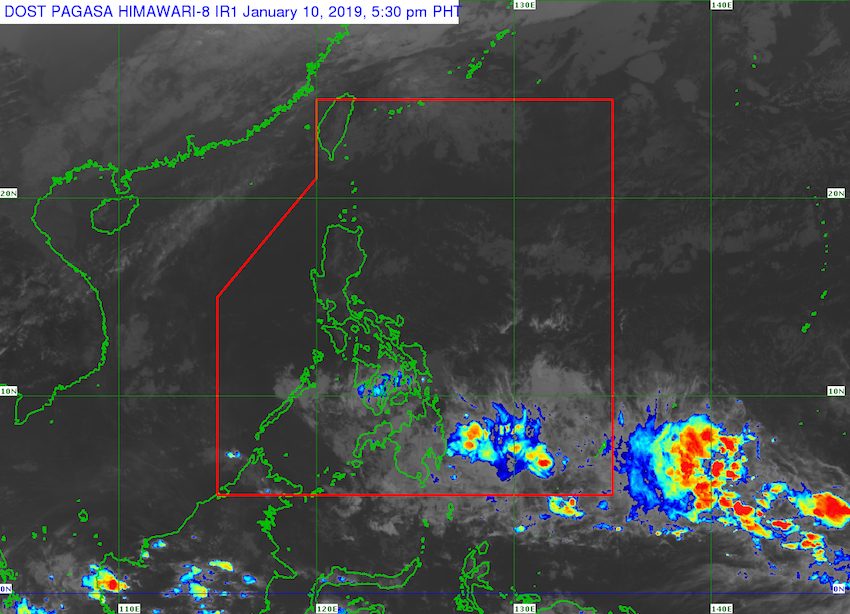SUMMARY
This is AI generated summarization, which may have errors. For context, always refer to the full article.

What’s the weather like in your area? Report the situation through Rappler’s Agos or tweet us at @rapplerdotcom.
MANILA, Philippines – The tail-end of a cold front will again affect the Visayas and Northern Mindanao on Friday, January 11.
A cold front forms when an advancing cold air mass displaces warmer air in its path, causing the displaced warm air to rise, which then leads to the formation of clouds and precipitation.
In a bulletin issued 4 pm on Thursday, January 10, the Philippine Atmospheric, Geophysical, and Astronomical Services Administration (PAGASA) warned that it will rain in Central Visayas, Eastern Visayas, Caraga, and the Davao Region.
The rain, ranging from light to heavy, could bring flash floods and landslides.
The tail-end of a cold front was already bringing rain on Thursday.
At 5:10 pm on Thursday, a yellow rainfall warning was even issued for the province of Cebu. This means heavy rain is expected within the next 3 hours. Floods are possible in low-lying areas and near rivers. (READ: FAST FACTS: Tropical cyclones, rainfall advisories)
Meanwhile, the northeast monsoon or hanging amihan will continue to affect Luzon.
There will be light rain, but PAGASA does not expect any “significant impact.”
Mindanao, not affected by either the tail-end of a cold front or the northeast monsoon, will only have localized thunderstorms.
Meanwhile, due to the surge of the northeast monsoon, a gale warning was issued at 5 pm on Thursday for the eastern coast of the Camarines provinces, Catanduanes, the eastern coast of Sorsogon, Northern Samar, Eastern Samar, the eastern coast of the Surigao provinces, the Dinagat Islands, Siargao, and the eastern coast of Davao Oriental.
Seas off those areas are rough to very rough, with wave heights reaching 2.8 meters to 4.5 meters.
PAGASA advised fishermen and others with small vessels not to set sail in areas covered by the gale warning. Larger vessels should watch out for big waves.
PAGASA is not monitoring any tropical cyclone at the moment. The forecast for January is zero to one tropical cyclone.
The Philippines gets an average of 20 tropical cyclones per year. (READ: LIST: PAGASA’s names for tropical cyclones in 2019) – Rappler.com
Add a comment
How does this make you feel?







There are no comments yet. Add your comment to start the conversation.